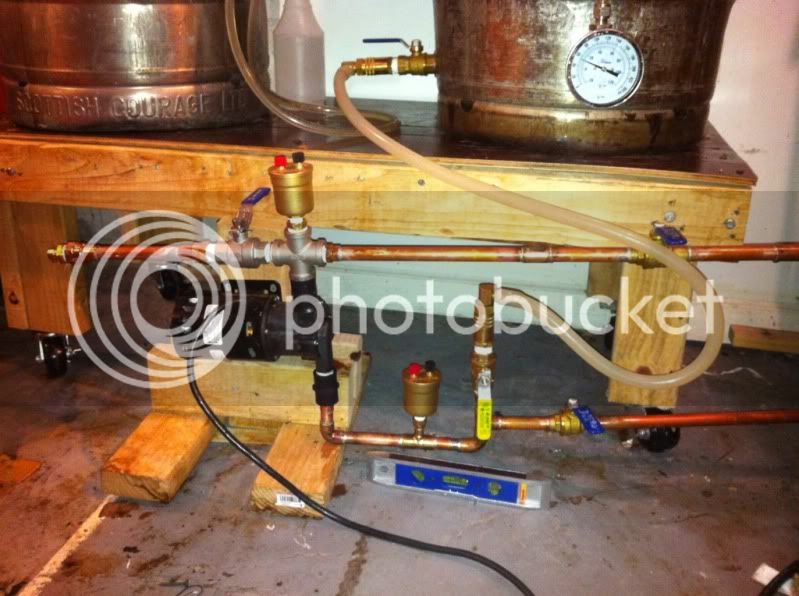This is getting pretty frustrating. I have a March 809 pump. Generally was working great for about the last 6 months. I recently hard plumbed my system. Last time I brewed I had some serious problems with inconsistent flow and "sputtering." Flow would start, then choke off, sometimes, stop, then start up again. I chocked it up to a stuck sparge during RIMS. I had to brush grain off my braid to get flow going. But now I'm just testing my system with water and I'm getting that sputtering flow again. Fast one second, choking off the next with air bubbles in the line.
I have a bleeder valve and an autovent, so I don't think priming is the issue. I've been messing around trying to improve it and nothing seems to be working.
Any ideas? Is it my pump? My setup? Here's a pic. I don't know what to try here so any ideas are appreciated.




I have a bleeder valve and an autovent, so I don't think priming is the issue. I've been messing around trying to improve it and nothing seems to be working.
Any ideas? Is it my pump? My setup? Here's a pic. I don't know what to try here so any ideas are appreciated.



